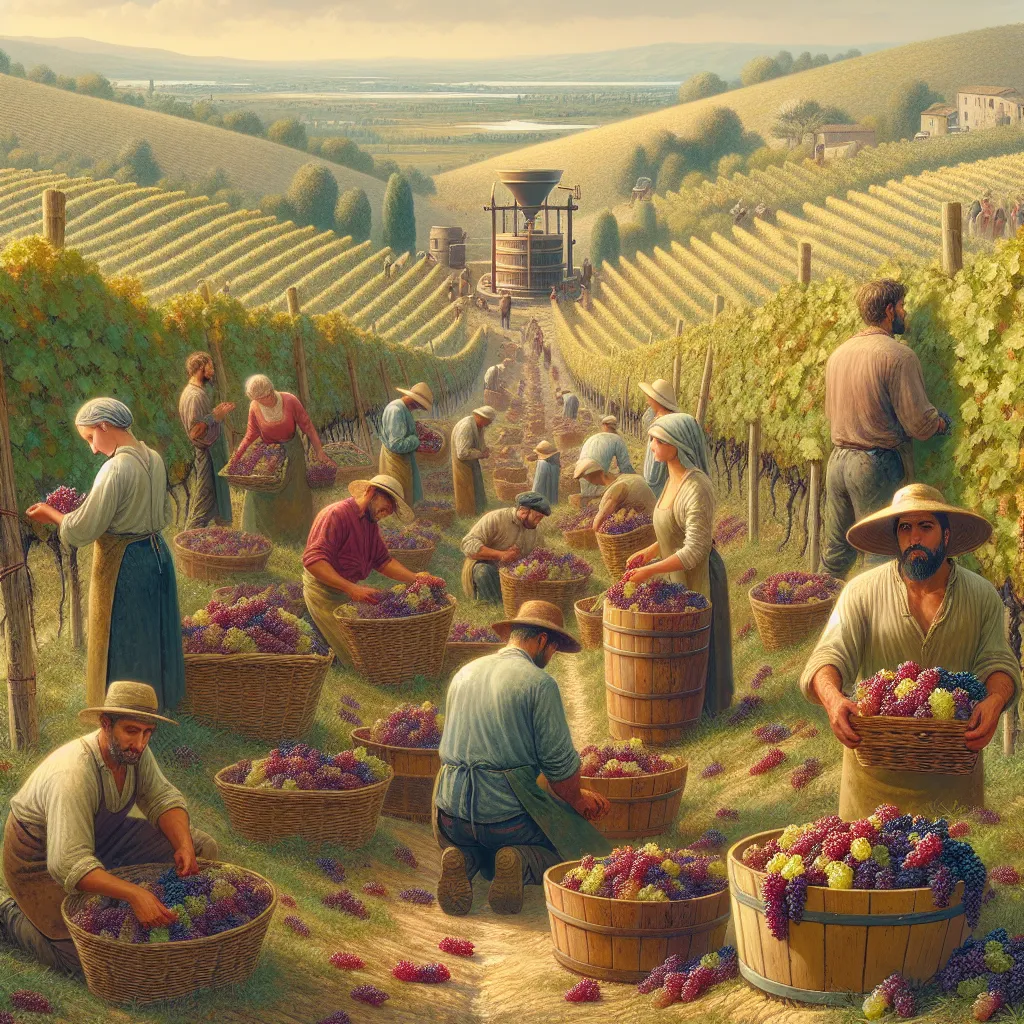Beautiful white wines of Irpinia, Italy.

Irpinia - this region is located in Italy, in the Campania region, south of Naples. This autumn, I was asked to give a series of lectures on Italian food and wines aboard a sailing vessel cruising the Tyrrhenian Sea along the western coast of Italy. I wanted to connect my lecture with the regional ports we visited in the south and introduced the wines of Irpinia in the Campania region, with wines provided on board by the Consorzio di Tutela dei Vini d'Irpinia. Some bottles I already knew, at least by the producer, but I was impressed by the high quality and distinctive characteristics of these wines, especially the whites, which I would rank among the best in Italy.
Irpinia, named after an ancient word meaning "wolf" and still used as the emblem of the province, is a volcanic region divided by the Apennine Mountains. The soil and the changing climate—hot days and cool nights—greatly contribute to the mineral taste of the wines. As a result, the wines of Irpinia have earned a significant number of DOCG appellations, the highest in Italy.
The white wine Fiano di Avellino remained unnoticed until the beginning of the last century, when small vineyards began to improve it. By the 1920s, Irpinia was one of the most valuable wine regions in Italy, with a "wine railway" connection that allowed producers to send grapes to buyers in northern Italy and France. However, phylloxera, an epidemic, devastated the industry, followed by the Great Depression and World War II. A powerful earthquake in 1980 destroyed the region, and although farmers were encouraged to replant more reliable northern grape varieties like Sangiovese or Montepulciano, they stubbornly continued to plant and improve southern varieties such as Aglianico, Greco, Fiano di Avellino, and other local varieties.
Since the 1980s, Taurasi, sometimes referred to as the "Barolo of the South," has become the most famous red wine of the region, made from the Aglianico grape, which is now grown in 17 municipalities in the province of Avellino. White wines are made from the Fiano di Avellino and Greco di Tufo grape varieties. Fiano, as noted in Ian D'Agata's monumental work "Native Wine Grapes of Italy" (2014), "may be the greatest white grape of Italy," and based on my tastings of Irpinian wines, I completely agree with this statement. Fiano is one of the oldest grape varieties in Italy, which had been forgotten by the 1970s. Only in this century has this grape variety regained its reputation in new wineries.
I particularly enjoyed the Empatia ($26) from DOCG Fiano, a single vineyard wine from one of the most prestigious wineries in the region, Donnachiara in Montefalcione, located about 600 meters above sea level. The soil has a high chalk content, which is said to give the wine a hint of balsamic herbs, making it perfect for seafood.




Donnachiara was founded in 2005 by Chiara Petitto and her daughter Ilaria, representatives of the fifth generation of their noble family. Wine critic Riccardo Cotarella, president of the International Union of Winemakers and a professor of viticulture and oenology at the University of Tuscia in Viterbo, aims to achieve a balance between aromatic fruit and acidity, which allows Fiano to have a wonderful nutty aftertaste. The grapes for this wine are grown in volcanic soil, which gives it remarkable minerality.
Tenuta Sarno 1860 in Candida was founded in 2004 by Maura Sarno on seven hectares of clay and limestone soils formed from volcanic deposits. The vineyard exclusively grows Fiano, focusing on organic viticulture methods. The grapes are processed only in steel containers, aged on the lees for 12-36 months, and then aged for another six months after bottling. The company produces Fiano di Avellino under four different labels: Sarno 1860; Sarno 1860 ERRE; Sarno 1860 EMME ($30); and Sarno 1860 Sparkling.
Greco di Tufo from Ponte dei Santi ($30) is produced by Villa Raiano, which was founded in 2009 when the family purchased the old mills of the Basso family. The vineyards are located on a hill in San Michele di Serino, at an altitude of 550 meters, where the soil is quite sandy. The wine is fully aged in steel tanks and then rests in bottles for 12 months, developing nuances and the sophistication of its minerality.
I didn't know that anyone produced sparkling wines from Greco di Tufo, so I was thrilled with the Petilia Greco di Tufo Frizzante Ancestral 2022 ($19) from eight-year-old vineyards located in Altavilla Irpina, one of the eight towns in the Greco di Tufo area. The grapes undergo "ultra-gentle" pressing, and then the fermentation process takes place inside the bottle using the ancestral method. Surprisingly, the wine is not filtered, which gives it a richer body than typical sparkling wines. It has a wonderful effervescence and floral aromas, making it a fantastic wine to serve with first courses and fresh cheeses.
Comment
Popular Posts
Popular Offers

Subscribe to the newsletter from Hatamatata.com!
Subscribe to the newsletter from Hatamatata.com!
I agree to the processing of personal data and confidentiality rules of Hatamatata










